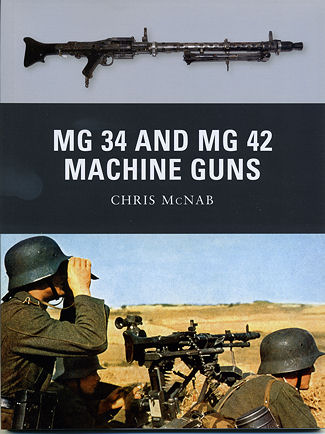 The most
potent squad level weapon is the machine gun. During WWI, German Spandau machine
guns were the bane of enemy troops as their withering fire was enough to cause
very high casualties. However, machine guns were generally heavy due to the need
to water cool the barrels. The British developed the air cooled Lewis gun,
though it was never quite as effective as the German guns.
The most
potent squad level weapon is the machine gun. During WWI, German Spandau machine
guns were the bane of enemy troops as their withering fire was enough to cause
very high casualties. However, machine guns were generally heavy due to the need
to water cool the barrels. The British developed the air cooled Lewis gun,
though it was never quite as effective as the German guns.
However, the Lewis was what you might call a light
machine gun as it could be hauled around with greater ease. It rarely used a
hefty mount, relying, as did the American BAR on a bipod at the front of the
gun. What was needed was a 'universal' machine gun that was light weight, able
to be operated in both the heavy and light gun role and one that was relatively
easy to maintain.
To meet this need, the Germans developed the MG 34. It
was relatively light, could be operated at squad level, could also be placed on
a sturdy, though heavy mount for the heavy machine gun role, and was somewhat
easy to maintain. It also had a pretty respectable rate of fire; 900 rpm. This
high rate of fire not only put out more bullets into a target in x amount of
time, but had a few drawbacks. One is that the barrel got very hot and had to be
changed somewhat often. A quick change barrel was part of the design and a good
team could swap one out in a short time. The other is that it had a high rate of
ammunition use. It also required a rather strong man behind the trigger to keep
the gun on target. This latter trait was not much of an issue in the heavy
machine gun role, thanks to the hefty mount, but in the light role it could be
an issue.
The MG 34 was also not very tolerant of dirt and dust.
It was built to very tight tolerances and so was prone to jamming if not kept
clean. Not exactly a good trait in the desert or dry condition. However, the gun
was built and used until the end of the war in both infantry use and as the gun
of choice for armor.
Wanting an improved gun, the MG 42 was developed a few
years into the war. This gun had an even higher rate of fire (1200 rpm) and was
developed to slightly looser tolerances than the MG 34. This meant fewer issues
with jamming. The gun was also made of stamped steel and so was half as
expensive to build and could be built in less than half the time. Barrel
changing was also simplified and could be changed in less than 10 seconds, a
time that was quite important if you had enemy coming at you.
So effective were these guns that the very sound of them
often brought fear and consternation to soldiers on the wrong end of it. With
several set up in cross-fire, it made for a most effective block to the advance
of enemy troops. Fortunately for the Allies, Germany was unable to produce
weapons like this or any other in the quantities that came from the US and
Soviet Union. However, it was a most successful gun and even now is still being
used in slightly modified versions as the MG3 by nations all around the world.
The stjory of this gun is told by Chris McNab and goes
fronm the early need for a 'universal' machine gun to the development of the MG
34, then the MG 42 and on to its post war use. It all makes for another superb book and if you are
interested in weapons, then this book is very much a must have. Highly
recommended.
December 2012
For more on the complete line of Osprey books,
visit www.ospreypublishing.com
or contact them at Osprey Direct, PO Box 140, Wellingborough, Northants,
NN8 2FA, UK. In the US, it is
Osprey Direct at 44-02 23rd St, Suite 219, Long Island City, NY 11101., where you can
get a catalogue of available books.
If you would like your product reviewed fairly and quickly, please
contact
me or see other details in the Note to
Contributors.
 The most
potent squad level weapon is the machine gun. During WWI, German Spandau machine
guns were the bane of enemy troops as their withering fire was enough to cause
very high casualties. However, machine guns were generally heavy due to the need
to water cool the barrels. The British developed the air cooled Lewis gun,
though it was never quite as effective as the German guns.
The most
potent squad level weapon is the machine gun. During WWI, German Spandau machine
guns were the bane of enemy troops as their withering fire was enough to cause
very high casualties. However, machine guns were generally heavy due to the need
to water cool the barrels. The British developed the air cooled Lewis gun,
though it was never quite as effective as the German guns.